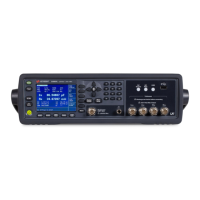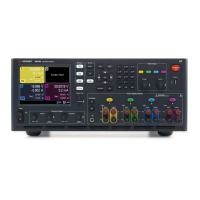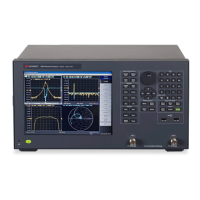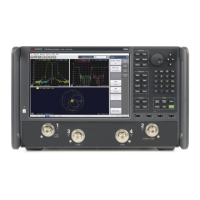The following table shows the typical error for various pulse waveforms as a function of input pulse fre-
quency:
Typical error for square wave, triangle wave, and pulse trains of CF=3, 5, or 10
prf square wave triangle CF=3 CF=5 CF=10
200 -0.02% 0.00% -0.04% -0.09% -0.34%
1000 -0.07% 0.00% -0.18% -0.44% -1.71%
2000 -0.14% 0.00% -0.34% -0.88% -3.52%
5000 -0.34% 0.00% -0.84% -2.29% -8.34%
10000 -0.68% 0.00% -1.75% -4.94% -26.00%
20000 -1.28% 0.00% -3.07% -8.20% -45.70%
50000 -3.41% -0.04% -6.75% -32.0% -65.30%
100000 -5.10% -0.12% -21.8% -50.6% -75.40%
This table gives an additional error for each waveform, to be added to the value from the accuracy table
provided in the instrument's data sheet
The specifications are valid for CF ≤ 10, provided there is insignificant signal energy above the 300 kHz
bandwidth for voltage, or the 10 kHz bandwidth for current. Multimeter performance is not specified for
CF > 10, or when significant out-of-band signal content is present.
Example
A pulse train with level 1 Vrms, is measured on the 1 V range. It has pulse heights of 3 V (that is, a Crest
Factor of 3) and duration 111 µs. The prf can be calculated to be 1000 Hz, as follows:
Thus, from the table above, this AC waveform can be measured with 0.18 percent additional error.
Measurement Tutorial
170
Keysight Truevolt Series Operating and Service Guide
